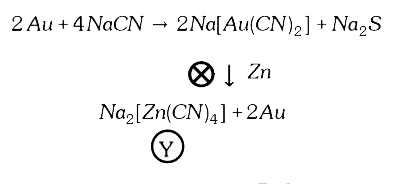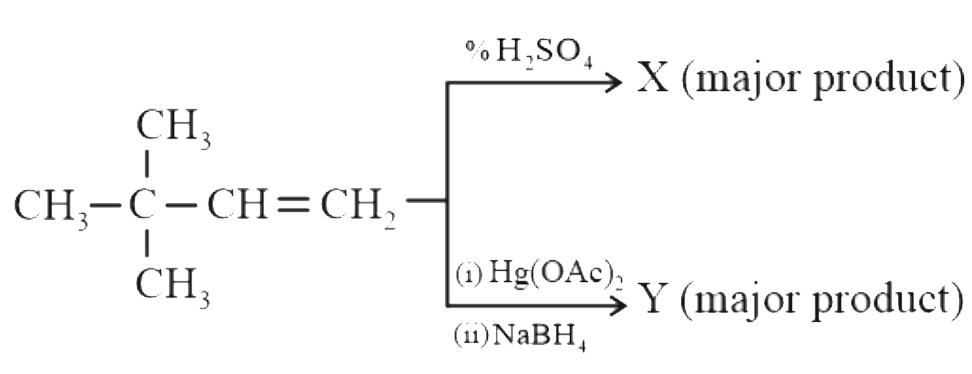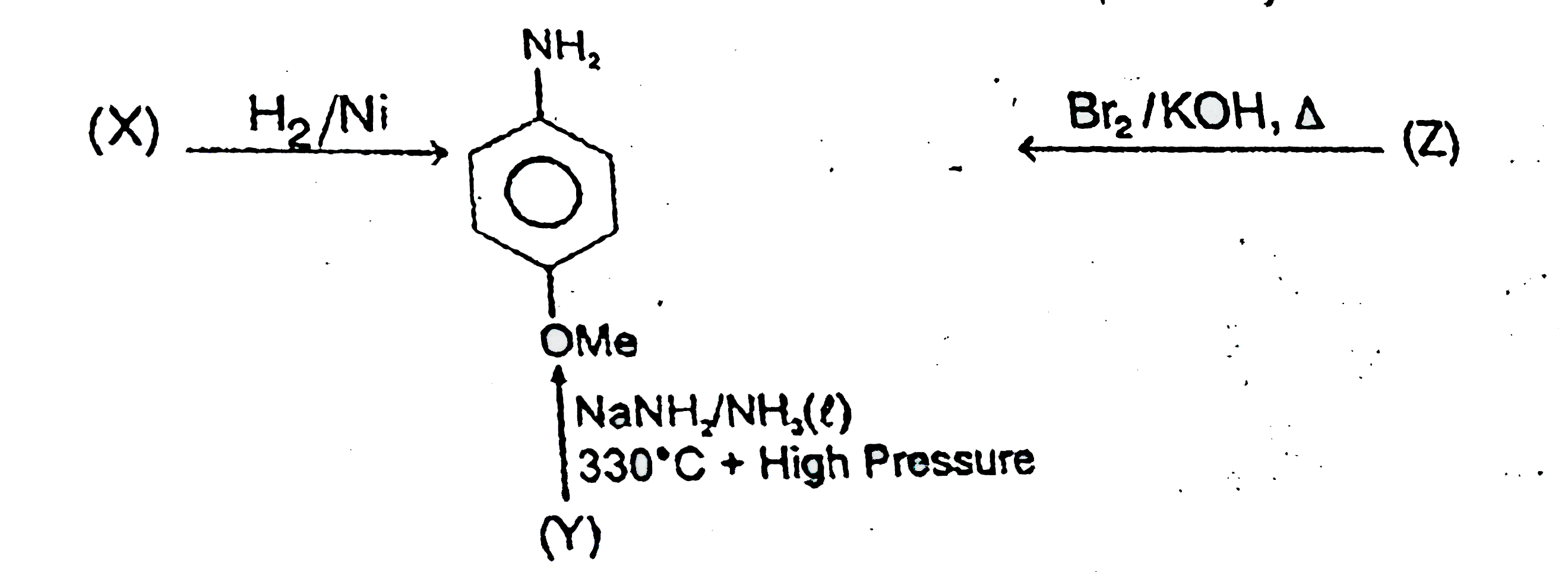During the extraction of gold the following reactions takes place
Au+CN−+H2O→X,Y+Zn→Y+Au
Here, Xand Y respectively are
Au(CN)−2andZn(CN)2−4
Au(CN)3−4 and Zn(CN)2−4
Au(CN)−3 and Zn(CN)4−6
Au(CN)−4 and Zn(CN)−3
The correct Answer is:A
Topper's Solved these Questions
- BOOK - ERRORLESSCHAPTER - GENERAL PRINCIPLES & PROCESSES OF ISOLATION OF ELEMENTSEXERCISE - NCERT BASED QUESTIONS (Reduction of Free Metal)43videos
GENERAL PRINCIPLES & PROCESSES OF ISOLATION OF ELEMENTS
- BOOK - ERRORLESSCHAPTER - GENERAL PRINCIPLES & PROCESSES OF ISOLATION OF ELEMENTSEXERCISE - NCERT BASED QUESTIONS (Refining of Crude Metal)27videos
GENERAL PRINCIPLES & PROCESSES OF ISOLATION OF ELEMENTS
- BOOK - ERRORLESSCHAPTER - GENERAL PRINCIPLES & PROCESSES OF ISOLATION OF ELEMENTSEXERCISE - NCERT BASED QUESTIONS (CONCENTRATION)21videos
GENERAL PRINCIPLES & PROCESSES OF ISOLATION OF ELEMENTS
- BOOK - ERRORLESSCHAPTER - ELECTROCHEMISTRYEXERCISE - Assertion & Reason11videos
ELECTROCHEMISTRY
- BOOK - ERRORLESSCHAPTER - HELOALKANES AND HALOARENESEXERCISE - Assertion & Reason8videos
HELOALKANES AND HALOARENES
Similar Questions
Knowledge Check
- Question 1 - Select One
In the reaction

x and y, respectively, are
Ax=CH3OH,y=Pd/BaSO4, quinoline, H2Bx=CH3I,y=Pd/BaSO4, quinoline, H2Cx=CH3I,y=Na in liq. NH3Dx=CH3OH,y=Na in liq. NH3 - Question 2 - Select One
In the following reaction

X and Y respectively are :A B
B C
C D
D
- Question 3 - Select One
In the reaction,

X and Y are respectively,AC6H5Cl and C6H5SO3HBC6H5Cl and C6H5OHCC6H4Cl and C6H5SO2DC6H5Cl and C6H5CHO
In the extraction of silver from argentite ore the ore is treated witlh dilute solution of NaCN in water in the presence of Y, whereby the following reaction takes place Ag2X+4NaCN+2Y→2Na[Ag(CN)2]+Na2XO4
X and Y in this reaction are represented byView SolutionWhich of the following reaction takes place in blast fumace during extraction of copper ?
View SolutionIn the following reaction sequence, X and Y , respectively are
 View Solution
View SolutionIn the following reaction
CH3COOH+Xconc.H2SO4−−−−−−→Y+CO2+N2 X and Y are respectivelyView SolutionIn the reaction (X) and (Y) are respectively.
 View Solution
View Solution




